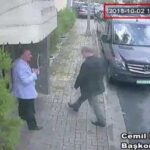Khalid Ali-M Aldawsari, 22, a citizen of Saudi Arabia and resident of Lubbock, Texas, was sentenced today by U.S. District Judge Donald E. Walter in federal court in Amarillo, Texas, to life in prison.
Aldawsari was convicted on June 27, 2012, on an indictment charging one count of attempted use of a weapon of mass destruction in connection with his purchase of chemicals and equipment necessary to make an improvised explosive device (IED) and his research of potential U.S. targets, including persons and infrastructure. He was lawfully admitted into the United States in 2008 on a student visa and was enrolled at South Plains College near Lubbock.
Today’s announcement was made by Sarah R. Saldaña , U.S. Attorney for the Northern District of Texas; Lisa Monaco, Assistant Attorney General for National Security; and Diego G. Rodriguez, Special Agent in Charge of the FBI Dallas Field Division.
According to court documents and evidence presented during trial, at the time of his arrest last year, Aldawsari had been researching online how to construct an IED using several chemicals as ingredients. He had also acquired or taken a substantial step toward acquiring most of the ingredients and equipment necessary to construct an IED and he had conducted online research of several potential U.S. targets. In addition, he had allegedly described his desire for violent jihad and martyrdom in blog postings and a personal journal.
“This case, in which private citizens paid attention to details and notified authorities of their suspicions, serves as a reminder to all private citizens that we must always be observant and vigilant, as there are some who intend to cause great harm,” said U.S. Attorney Saldaña. “Khalid Aldawsari, acting as a lone wolf, may well have gone undetected were it not for the keen observations of private citizens. We owe them, and all the hundreds of hard-working members of our law enforcement community, our deepest gratitude.”
“Khalid Aldawsari came to this country intent on carrying out an attack. He then began purchasing ingredients to construct a bomb and was actively researching potential targets in America. Thanks to the hard work of many agents, analysts and prosecutors, his plot was thwarted before anyone was harmed; he was convicted at trial and, today at sentencing, he was held accountable for his actions,” said Assistant Attorney General Monaco.
|
|
“Today’s sentencing demonstrates our commitment to detecting, investigating and prosecuting individuals who seek to do harm to others in our country. Our success was the result of the cooperation of law enforcement and intelligence resources, particularly, the FBI’s North Texas Joint Terrorism Task Force, the Texas Tech Police Department, the Lubbock Police Department and the Lubbock County Sheriff’s Office,” said FBI Special Agent in Charge Rodriguez. “The dedicated agents, officers, and analysts; the computer forensics team; and the linguists are all to be commended for their diligent work on this investigation and the U.S. Attorney’s Office in the Northern District for the successful prosecution of Mr. Aldawsari.”
The government presented evidence that on Feb. 1, 2011, a chemical supplier reported to the FBI a suspicious attempted purchase of concentrated phenol by a man identifying himself as Khalid Aldawsari. Phenol is a toxic chemical with legitimate uses, but can also be used to make the explosive trinitrophenol, also known as T.N.P., or picric acid. Ingredients typically used with phenol to make picric acid, or T.N.P., are concentrated sulfuric and nitric acids.
Aldawsari attempted to have the phenol order shipped to a freight company so it could be held for him there, but the freight company told Aldawsari that the order had been returned to the supplier and called the police. Later, Aldawsari falsely told the supplier he was associated with a university and wanted the phenol for “off-campus, personal research.” Frustrated by questions being asked over his phenol order, Aldawsari cancelled his order, placed an order with another company, and later emailed himself instructions for producing phenol. In December 2010, he had successfully purchased concentrated nitric and sulfuric acids.
Aldawsari used various email accounts in researching explosives and targets, and often sent emails to himself as part of this process. He emailed himself a recipe for picric acid, which was described in the email as a “military explosive” and also emailed himself instructions on how to convert a cell phone into a remote detonator and how to prepare a booby-trapped vehicle using household items. Aldawsari also purchased many other items, including a Hazmat suit, a soldering iron kit, glass beakers and flasks, a stun gun, clocks and a battery tester.
Excerpts from a journal found at Aldawsari’s residence indicated that he had been planning to commit a terrorist attack in the United States for years. One entry describes how Aldawsari sought and obtained a particular scholarship because it allowed him to come directly to the United States and helped him financially, which he said “will help tremendously in providing me with the support I need for Jihad.” The entry continues: “And now, after mastering the English language, learning how to build explosives and continuous planning to target the infidel Americans, it is time for Jihad.”
In another entry, Aldawsari wrote that he was near to reaching his goal and near to getting weapons to use against infidels and their helpers. He also listed a “synopsis of important steps” that included obtaining a forged U.S. birth certificate; renting a car; using different driver’s licenses for each car rented; putting bombs in cars and taking them to different places during rush hour; and leaving the city for a safe place.
|
|
Aldawsari conducted research on various targets and emailed himself information on these locations and people. One of the documents he sent himself, with the subject line listed as “Targets,” contained the names and home addresses of three American citizens who had previously served in the U.S. military and had been stationed for a time at Abu Ghraib prison in Iraq. In others, Aldawsari sent himself the names of 12 reservoir dams in Colorado and California and listed two categories of targets: hydroelectric dams and nuclear power plants. He also sent himself an email titled “Tyrant’s House,” in which he listed the Dallas address for former President George W. Bush. Aldawsari also conducted research that indicated he considered using infant dolls to conceal explosives and the possible targeting of a nightclub with an explosive concealed in a backpack.
This case was investigated by the FBI’s Dallas Joint Terrorism Task Force, which includes many federal, state and local partners, with assistance from the Lubbock Police Department and the Texas Tech Police Department. The prosecution was handled by Assistant U.S. Attorneys Jeffrey R. Haag, Denise Williams and Matthew J. Kacsmaryk and Trial Attorney David Cora from the Counterterrorism Section of the Justice Department’s National Security Division.
Source: Department of Justice







